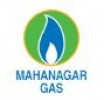
i
Gps Renewables
Filter interviews by
Gps Renewables Process Engineer Interview Questions and Answers
Gps Renewables Process Engineer Interview Experiences
1 interview found
I applied via Approached by Company and was interviewed in Oct 2023. There were 3 interview rounds.

(1 Question)
- Q1. P&id, pump data sheets, NPSH
(1 Question)
- Q1. P&id, pump Calculations, NPSH.
Top trending discussions






Interview questions from similar companies

I applied via Naukri.com and was interviewed before Jun 2020. There was 1 interview round.
Interview Questionnaire
28 Questions
- Q1. What is mean by safety
- Ans.
Safety refers to the condition of being protected from harm, danger, or injury.
Safety involves taking measures to prevent accidents and injuries
It includes following rules and regulations to ensure a safe environment
Safety can be achieved through proper training and education
Examples of safety measures include wearing protective gear, using safety equipment, and practicing safe behaviors
Safety is important in all indus...
- Q2. What is LEL
- Ans.
LEL stands for Lower Explosive Limit and is the minimum concentration of a gas or vapor in air that can ignite.
LEL is a safety term used in industries dealing with flammable gases and liquids.
It is expressed as a percentage of the gas or vapor in air.
If the concentration of the gas or vapor is below the LEL, it is too lean to ignite.
If the concentration is above the LEL, it is too rich and can ignite.
For example, the L...
- Q3. What is RA
- Q4. What is JSA/JHA
- Ans.
JSA/JHA stands for Job Safety Analysis/Job Hazard Analysis. It is a process of identifying potential hazards and risks in a job or task.
JSA/JHA is a systematic approach to identify and mitigate potential hazards in a job or task
It involves breaking down a job or task into steps and analyzing each step for potential hazards
The analysis includes identifying the hazards, assessing the risks, and implementing controls to m...
- Q5. Role of HSE
- Ans.
HSE plays a crucial role in ensuring the safety and well-being of employees and the environment.
HSE stands for Health, Safety, and Environment.
It involves identifying and assessing potential hazards and implementing measures to control or eliminate them.
HSE also includes training employees on safety procedures and emergency response plans.
Examples of HSE measures include wearing personal protective equipment, conductin...
- Q6. What is Hchem
- Ans.
Hchem is not a known term or acronym in the engineering field.
Hchem is not a commonly used term in engineering
It is possible that the interviewer misspoke or meant to ask a different question
Without more context, it is difficult to provide a more specific answer
- Q7. What is Hazop
- Ans.
Hazop is a structured and systematic technique used to identify potential hazards and operability problems in industrial processes.
Hazop stands for Hazard and Operability Study
It involves a team of experts analyzing a process to identify potential hazards and operability issues
Hazop is commonly used in the chemical, oil and gas, and pharmaceutical industries
The process involves breaking down the process into smaller pa...
- Q8. What is confined space
- Ans.
Confined space refers to an area that is enclosed and has limited access and ventilation.
Examples include tanks, silos, sewers, and tunnels.
Workers entering confined spaces must follow safety protocols and use specialized equipment.
Hazards in confined spaces include lack of oxygen, toxic gases, and physical obstructions.
Proper training and communication are crucial for working in confined spaces.
- Q9. What is work at height
- Ans.
Work at height refers to any task performed at a height where a person could fall and injure themselves.
Work at height involves working on ladders, scaffolding, roofs, or any other elevated surface
It is important to use appropriate safety equipment such as harnesses, guardrails, and safety nets
Workers should be trained on how to safely work at height and how to properly use safety equipment
Examples of work at height in...
- Q10. Hazard of confined space
- Ans.
Confined spaces pose a significant hazard due to limited entry and exit points, poor ventilation, and potential for hazardous substances.
Limited entry and exit points can make it difficult to escape in case of an emergency
Poor ventilation can lead to a buildup of toxic gases or lack of oxygen
Potential for hazardous substances such as chemicals, fumes, or dust
Examples include tanks, silos, sewers, and tunnels
Proper trai...
- Q11. Precautions of confined space
- Ans.
Precautions to be taken while working in confined spaces
Proper ventilation and air quality testing
Use of personal protective equipment
Proper lighting and communication equipment
Training and certification for workers
Emergency rescue plan in place
- Q12. What is LEL&UEL
- Ans.
LEL&UEL stands for Lower Explosive Limit and Upper Explosive Limit respectively. They are the minimum and maximum concentrations of a flammable gas or vapor in air that can ignite.
LEL is the lowest concentration of a gas or vapor that can ignite
UEL is the highest concentration of a gas or vapor that can ignite
Concentrations between LEL and UEL are considered flammable
LEL and UEL vary depending on the gas or vapor
LEL an...
- Q13. What is competent person
- Q14. What is fire
- Ans.
Fire is a chemical reaction that releases heat, light, and various gases.
Fire is a rapid oxidation process that occurs when fuel (such as wood, paper, or gasoline) combines with oxygen in the presence of heat or a spark.
It releases heat, light, and various gases such as carbon dioxide, water vapor, and nitrogen oxides.
Fire can be beneficial (such as for cooking or heating) or destructive (such as in wildfires or house ...
- Q15. Types of fire
- Ans.
There are four types of fire: Class A, Class B, Class C, and Class D.
Class A fires involve ordinary combustibles such as wood, paper, or cloth.
Class B fires involve flammable liquids or gases such as gasoline, oil, or propane.
Class C fires involve electrical equipment such as appliances, wiring, or circuit breakers.
Class D fires involve combustible metals such as magnesium, titanium, or sodium.
- Q16. Type of extinguisher
- Ans.
There are different types of fire extinguishers for different types of fires.
Water extinguishers for Class A fires (wood, paper, cloth, etc.)
CO2 extinguishers for Class B and C fires (flammable liquids and electrical fires)
Dry chemical extinguishers for Class A, B, and C fires
Foam extinguishers for Class A and B fires
Wet chemical extinguishers for Class K fires (cooking oils and fats)
- Q17. Modes of heat transfer
- Ans.
Modes of heat transfer include conduction, convection, and radiation.
Conduction is the transfer of heat through a material without any movement of the material itself.
Convection is the transfer of heat through the movement of fluids, such as air or water.
Radiation is the transfer of heat through electromagnetic waves, such as from the sun or a fire.
- Q18. How to prevent fire
- Ans.
Preventing fire requires proper handling of flammable materials and regular maintenance of electrical equipment.
Store flammable materials in designated areas away from heat sources
Regularly inspect and maintain electrical equipment
Install smoke detectors and fire extinguishers in appropriate locations
Train employees on fire safety procedures and evacuation plans
- Q19. What is msds
- Ans.
MSDS stands for Material Safety Data Sheet.
MSDS provides information about hazardous chemicals and substances.
It includes information about the physical and chemical properties of the substance, health hazards, precautions for safe handling and use, and emergency procedures.
MSDS is required by law for all hazardous chemicals and substances used in the workplace.
It is important to read and understand the MSDS before usi...
- Q20. How to do firefighting
- Ans.
Firefighting involves identifying and extinguishing fires to prevent damage and loss of life.
Assess the situation and determine the type and size of fire
Use appropriate firefighting equipment such as fire extinguishers, hoses, and pumps
Follow safety protocols and wear protective gear
Coordinate with other firefighters and emergency responders
Evacuate people from the affected area
Monitor the situation and ensure the fire
- Q21. How to prevent the accident
- Ans.
Prevent accidents by identifying potential hazards and implementing safety measures.
Conduct regular safety audits and risk assessments
Provide proper training and education to employees
Implement safety protocols and procedures
Use appropriate safety equipment and gear
Encourage a culture of safety and accountability
Regularly review and update safety policies and procedures
- Q22. How to investigate the accident
- Ans.
To investigate an accident, follow a systematic approach involving data collection, analysis, and identification of root causes.
Gather all available information about the accident, including eyewitness accounts, photographs, and any relevant documents or records.
Conduct interviews with individuals involved in the accident to gather their perspectives and insights.
Examine the accident scene for physical evidence, such a...
- Q23. Emergency procedure
- Q24. What is H2s
- Ans.
H2S is a colorless, flammable, and toxic gas with a strong odor of rotten eggs.
H2S is commonly known as hydrogen sulfide.
It is produced naturally by the breakdown of organic matter and is found in natural gas, crude oil, and volcanic gases.
It is highly toxic and can cause respiratory failure, loss of consciousness, and even death.
H2S is used in various industries such as oil and gas, mining, and pulp and paper.
It is al...
- Q25. Properties of H2s
- Ans.
H2S is a colorless, flammable, and toxic gas with a strong odor of rotten eggs.
H2S is highly flammable and can ignite easily
It is toxic and can cause respiratory failure
It has a distinctive odor of rotten eggs
H2S is used in the production of sulfuric acid and in the petroleum industry
- Q26. Hirerchy procedure
- Q27. Permissible exposure limit of H2s,co,co2,methane
- Ans.
Permissible exposure limits (PEL) are the maximum allowable concentrations of hazardous substances in the workplace.
H2S: PEL is 10 ppm (parts per million) over an 8-hour workday
CO: PEL is 50 ppm over an 8-hour workday
CO2: No specific PEL, but recommended exposure limit is 5,000 ppm over an 8-hour workday
Methane: No specific PEL, but recommended exposure limit is 1,000 ppm over an 8-hour workday
- Q28. Short term exposure limit of H2s
- Ans.
Short term exposure limit (STEL) of H2S is 10 ppm.
STEL is the maximum concentration of a substance that a worker can be exposed to for a short period of time without suffering from immediate or long-term health effects.
The STEL for H2S is set at 10 ppm (parts per million) by OSHA (Occupational Safety and Health Administration).
Exposure to H2S at levels above the STEL can cause symptoms such as eye irritation, headache,...
Interview Preparation Tips

I applied via Company Website and was interviewed in May 2024. There were 2 interview rounds.
Behavioral questions and resume delve
Pmi - product management information
Interview Preparation Tips

I applied via Naukri.com and was interviewed in Oct 2020. There were 3 interview rounds.
Interview Questionnaire
1 Question
- Q1. The HR round was very pathetic. Sreethala took my HR round.
Interview Preparation Tips
Mumbai location. They will take all the interview rounds. The HR will ask you to submit all documents and last moment they will cancel your candidature without giving you any specific reason.

I applied via Recruitment Consultant and was interviewed in Dec 2020. There were 6 interview rounds.
Interview Questionnaire
2 Questions
- Q1. 1st round is technical , 2nd is values & behaviors , 3rd is assessment road
- Q2. Be clear on values & behaviours , practice assement round offline before attempting
Interview Preparation Tips

I applied via Referral and was interviewed in Oct 2020. There was 1 interview round.
Interview Questionnaire
1 Question
- Q1. As related to gas process and control
Interview Preparation Tips

Interview Questionnaire
3 Questions
- Q1. How can you handle if there any emergency in production plant
- Ans.
In case of an emergency in production plant, I would follow the emergency protocol and take necessary actions to ensure safety.
Immediately alert the emergency response team and follow the established emergency protocol
Evacuate the affected area and ensure all employees are accounted for
Assess the situation and take necessary actions to contain the emergency
Communicate with management and stakeholders to keep them infor...
- Q2. What are the hazards in your plant and its controle
- Ans.
Hazards in the plant and their control
Chemical hazards: Proper storage and handling of hazardous chemicals
Electrical hazards: Regular inspection and maintenance of electrical equipment
Mechanical hazards: Implementation of safety guards and procedures
Fire hazards: Installation of fire detection and suppression systems
Ergonomic hazards: Providing ergonomic workstations and equipment
Noise hazards: Use of hearing protectio
- Q3. Type and details of permits
- Ans.
Permits required for production engineering
Building permits for construction and modification of production facilities
Environmental permits for compliance with regulations on emissions and waste management
Operating permits for the operation of specific equipment or processes
Safety permits for ensuring workplace safety and adherence to safety standards
Export permits for exporting products to other countries
Import permit...
Interview Preparation Tips
Experience: Oil and gas specifically from strong back ground like RELIANCE,GSPC

Interview Questionnaire
5 Questions
- Q1. What is difference between GTAW and TIG welding
- Ans.
GTAW and TIG welding are the same process, with GTAW being the technical term and TIG being the commonly used name.
GTAW stands for Gas Tungsten Arc Welding, while TIG stands for Tungsten Inert Gas welding.
Both processes use a non-consumable tungsten electrode to create an arc for welding.
GTAW and TIG welding are often used interchangeably, with TIG being the more commonly used term in industries.
The main difference lie...
- Q2. Draw Mahanagar gas network diagram with pressure variation
- Ans.
A Mahanagar gas network diagram with pressure variation needs to be drawn for the Project Engineer interview.
The diagram should include all the pipelines and their respective pressure levels.
The pressure variation should be shown using different colors or shades.
The diagram should also include the location of gas stations and regulators.
The pressure levels should be labeled and explained in a legend.
The diagram should
- Q3. What is risk and hazard
- Ans.
Risk is the likelihood of harm or loss, while hazard is the potential source of harm or danger.
Risk refers to the probability of an event occurring and the potential consequences of that event.
Hazard is anything that has the potential to cause harm, such as chemicals, machinery, or natural disasters.
Identifying and managing risks and hazards is important in ensuring safety and preventing accidents.
Examples of hazards i...
- Q4. Methane chemical composition
- Ans.
Methane is a chemical compound with the molecular formula CH4.
Methane is the simplest hydrocarbon.
It is a colorless, odorless gas.
It is highly flammable and burns with a blue flame.
Methane is the main component of natural gas.
It is produced naturally by anaerobic digestion of organic matter.
Methane is used as a fuel for heating and cooking.
It is also used as a feedstock for the production of chemicals such as methanol
- Q5. Pipe diameter used in mahanagar gas
- Ans.
The pipe diameter used in Mahanagar Gas varies depending on the specific project requirements.
The pipe diameter used in Mahanagar Gas projects is determined based on factors such as gas flow rate, pressure, and distance.
For high-pressure gas transmission pipelines, larger diameter pipes are typically used to minimize pressure drop.
In distribution pipelines, smaller diameter pipes are used to supply gas to individual co...


(2 Questions)
- Q1. Questions based on Gas characteristics, properties of Natural gas, HIRA, Site Safety, QA/QC, Customer experience, previous roles and responsibilities.
- Q2. How you see yourself growing in this field?
- Ans.
I see myself growing in this field by continuously learning new technologies, taking on more challenging projects, and eventually moving into a leadership role.
Continuously updating my skills and knowledge through training and certifications
Seeking out opportunities to work on more complex and high-profile projects
Developing strong leadership and project management skills to eventually move into a leadership role
Interview Preparation Tips

I applied via Company Website and was interviewed in Jun 2023. There were 3 interview rounds.

Graph based question. Duration: 45 mins
(5 Questions)
- Q1. What are different types of sensors used in oil and gas industries?
- Ans.
Various sensors used in oil and gas industries include pressure sensors, temperature sensors, flow sensors, level sensors, and gas detectors.
Pressure sensors - used to measure pressure in pipelines and equipment.
Temperature sensors - monitor temperature levels in various processes.
Flow sensors - measure the flow rate of liquids or gases in pipelines.
Level sensors - detect the level of liquids in tanks or vessels.
Gas de...
- Q2. What is HAZOP and HAZID?
- Ans.
HAZOP stands for Hazard and Operability Study, while HAZID stands for Hazard Identification.
HAZOP is a systematic method to identify potential hazards and operability issues in a process plant.
HAZID is a process used to identify hazards in a facility or operation before they become accidents.
Both HAZOP and HAZID are important tools in risk assessment and management in engineering projects.
- Q3. What are P, PI,PID in process control?
- Ans.
P, PI, PID are types of controllers used in process control to regulate the output based on the input.
P stands for Proportional controller, which adjusts the output based on the error signal.
PI stands for Proportional-Integral controller, which not only adjusts based on error signal but also integrates the error over time.
PID stands for Proportional-Integral-Derivative controller, which adjusts based on error signal, i...
- Q4. What do you know about Digital Electronics?
- Ans.
Digital Electronics is a branch of electronics that deals with digital signals and systems.
Deals with digital signals (0s and 1s)
Involves logic gates, flip-flops, and digital circuits
Used in computers, calculators, digital watches, etc.
Binary arithmetic and Boolean algebra are fundamental concepts
- Q5. What are level sensor, flow sensor, temperature sensor?
- Ans.
Level sensor, flow sensor, and temperature sensor are devices used to measure different physical parameters in various industries.
Level sensor measures the level of a substance in a container or tank, such as liquid level sensors in water tanks.
Flow sensor measures the flow rate of a fluid, like a flow meter in a pipeline.
Temperature sensor measures the temperature of a system or environment, for example, a thermocoupl
Interview Preparation Tips
Gps Renewables Interview FAQs
Tell us how to improve this page.
Gps Renewables Interviews By Designations
- Gps Renewables Project Manager Interview Questions
- Gps Renewables Mechanical Technician Interview Questions
- Gps Renewables Accounts & Finance Manager Interview Questions
- Gps Renewables Engineer Interview Questions
- Gps Renewables Senior Engineer Interview Questions
- Gps Renewables HR Associate Interview Questions
- Gps Renewables Process Engineer Interview Questions
- Gps Renewables Shift Engineer Interview Questions
- Show more
Interview Questions for Popular Designations
- Process Engineer Trainee Interview Questions
- Process Associate Interview Questions
- Chemical Process Engineer Interview Questions
- Junior Process Engineer Interview Questions
- Processing Executive Interview Questions
- Process Developer Interview Questions
- Assistant Manager Process Engineering Interview Questions
- Process Quality Engineer Interview Questions
- Show more
Gps Renewables Process Engineer Interview Process
based on 2 interviews
Interview experience
Interview Questions from Similar Companies
Gps Renewables Process Engineer Reviews and Ratings
based on 1 review
Rating in categories
|
Assistant Manager
15
salaries
| ₹6.5 L/yr - ₹16 L/yr |
|
Senior Engineer
9
salaries
| ₹7.1 L/yr - ₹11.7 L/yr |
|
Project Manager
9
salaries
| ₹16.5 L/yr - ₹20.8 L/yr |
|
Mechanical Engineer
8
salaries
| ₹6 L/yr - ₹7.8 L/yr |
|
Project Coordinator
7
salaries
| ₹5.5 L/yr - ₹6.5 L/yr |

Petrofac

Baker Hughes

Cairn Energy

NBTC GROUP
- Home >
- Interviews >
- Gps Renewables Interview Questions >
- Gps Renewables Process Engineer Interview Questions










